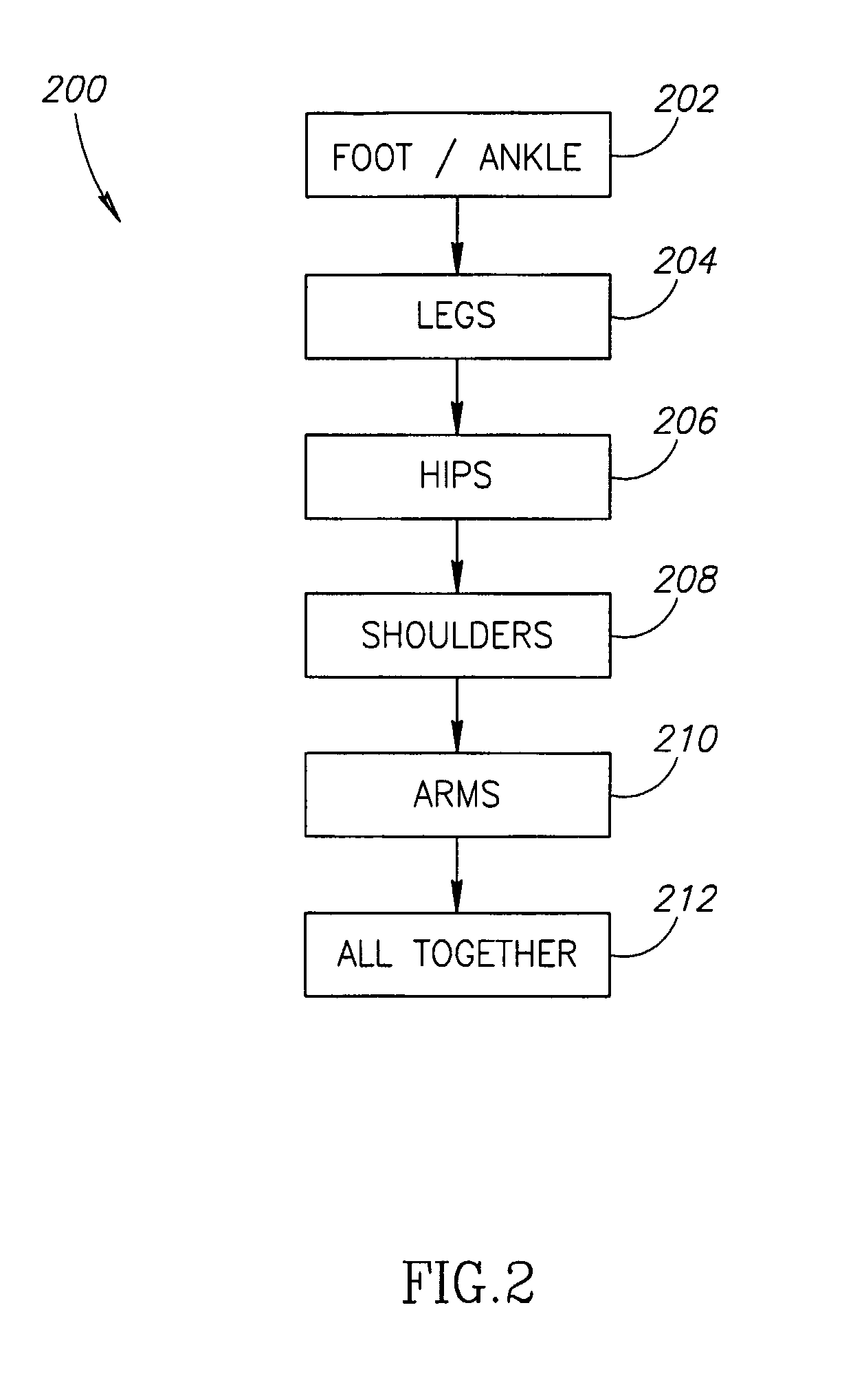Gait rehabilitation methods and apparatuses
a technology applied in the field of rehabilitation methods and equipment, can solve problems such as the loss of the ability to control gait of people, and achieve the effect of assisting with balance training
- Summary
- Abstract
- Description
- Claims
- Application Information
AI Technical Summary
Benefits of technology
Problems solved by technology
Method used
Image
Examples
Embodiment Construction
[0077]Referring now to FIG. 1, a flowchart 100 is presented which sets forth a method of gait rehabilitation in an exemplary embodiment of the invention. At action 102, gait rehabilitation commences with the identification of deficient elements in a particular patient's gait. Optionally, the patient is exposed to various optional tests and / or exercises which help a rehabilitation assistant evaluate the extent of rehabilitation necessary to restore the patient's gait. Tests are optionally conducted in conjunction with the methods and apparatuses described herein and / or with methods and apparatuses known to those skilled in the art. In some exemplary embodiments of the invention, elements of a gait include foot and ankle movement, leg movement, hip movement, shoulder movement, arm movement, and more advanced elements such as balance, overcoming obstacles and varying speeds. Optionally, one or more of these elements are rehabilitated using the methods and apparatuses described herein. ...
PUM
 Login to View More
Login to View More Abstract
Description
Claims
Application Information
 Login to View More
Login to View More - R&D
- Intellectual Property
- Life Sciences
- Materials
- Tech Scout
- Unparalleled Data Quality
- Higher Quality Content
- 60% Fewer Hallucinations
Browse by: Latest US Patents, China's latest patents, Technical Efficacy Thesaurus, Application Domain, Technology Topic, Popular Technical Reports.
© 2025 PatSnap. All rights reserved.Legal|Privacy policy|Modern Slavery Act Transparency Statement|Sitemap|About US| Contact US: help@patsnap.com



